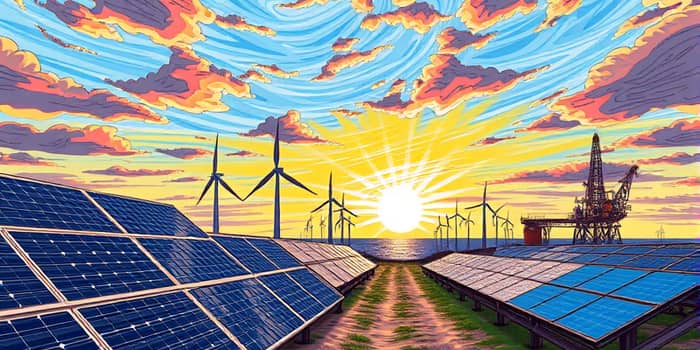
In 2024, the global energy landscape witnessed a remarkable upswing as demand soared across power, renewables, and fossil fuels alike. A confluence of extreme weather, rapid industrial electrification, and burgeoning digital infrastructure pushed total energy consumption to new highs. Stakeholders from investors to policymakers are now recalibrating strategies to capitalize on this unprecedented demand surge in energy while steering the sector toward sustainable growth.
Global energy demand grew by 2.2% in 2024, significantly above the decade average of 1.3%. This sharp rise reflects both transitory factors—most notably extreme weather events contributing 0.3 percentage points of the increase—and longer-term structural drivers.
The electrification of manufacturing, expanding adoption of electricity-intensive devices, and the rapid build-out of data centers driven by AI growth pushed electricity consumption up by 4.3%. Three-fifths of overall energy demand growth originated in the power sector, underlining the critical role of electricity in the modern economy.
Renewable technologies dominated new electricity capacity additions, outpacing all other sources by a wide margin. Meanwhile, natural gas maintained robust growth, and nuclear power began a modest rebound after years of stagnation. Fossil-fuel generation, by contrast, remained largely flat.
Key trends include:
Asia, led by China and India, accounted for 85% of global electricity demand growth in 2024. Rapid economic expansion, urbanization, and record investments in clean power infrastructure have transformed the region into the sector’s primary growth engine.
By contrast, industrialized economies in North America, Europe, and Japan saw relatively low or stagnant demand growth, as efficiency gains and mature grids offset incremental consumption. However, policy support and decarbonization mandates continue to accelerate clean energy transitions.
The global renewable energy market reached a value of $1.51 trillion in 2024, with forecasts projecting a rise to $4.86 trillion by 2033 at a 14.9% CAGR. Investors are keen to back sustainable assets, driving capital toward solar, wind, storage, and decentralized systems.
Market value of renewables hit $1.51T last year, underscoring the sector’s growing economic clout. Yet traditional energy segments remain profitable: oil prices held between $66 and $87 per barrel, supporting robust margins for producers and service firms despite investor rotation into technology.
Energy equities returned 7.8% in 2024, trailing the S&P 500’s 26.9% but poised for a rebound as fundamentals strengthen. Upstream oil and gas investments are buoyed by OPEC production restraint, slowing US shale growth, and elevated geopolitical risks in regions like the Middle East and Eastern Europe.
Energy-related CO₂ emissions increased by 0.8% in 2024, a slowdown compared to 1.2% growth in 2023. Adoption of clean technologies avoided an estimated 2.6 billion tonnes of CO₂, highlighting the impact of renewable and efficiency measures.
However, the energy intensity of the global economy improved by only 1%, reflecting a recent plateau in efficiency gains. Continued improvements in grid management, demand response, and technology innovation will be crucial to bend the emissions curve downward.
The path to net-zero and secure energy supply demands accelerated deployment. Renewables must expand at a 16.6% annual rate—versus the current 15%—to hit 2030 targets. Policy support, streamlined permitting, and robust financing are essential to bridge this gap.
Geopolitical tensions and supply chain constraints pose risks, but they also underscore the value of renewables and decentralized systems drive greater resilience. Developing nations stand to benefit most from clean power investments, as all new demand in 2025 is projected to be met by renewables and nuclear.
Tripling renewable capacity by 2030 requires unprecedented collaboration among governments, industry, and financial stakeholders. Investors should weigh both established oil and gas opportunities and the rapid growth of clean tech to build diversified portfolios that align with the energy transition.
As demand continues to outpace historical norms, the energy sector stands at a pivotal crossroads. Embracing innovation, fostering sustainable investment, and committing to ambitious climate goals will determine whether this performance surge translates into a lasting transformation toward a cleaner, more secure energy future.
References













